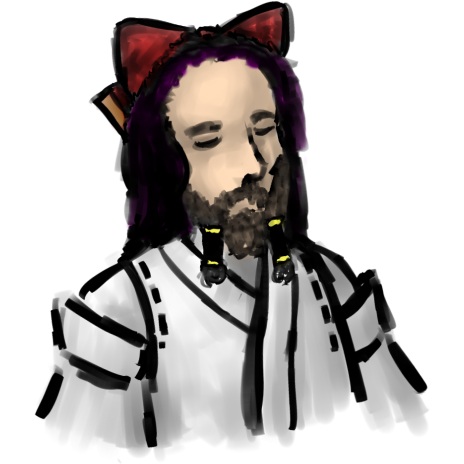- 📝 Posted:
- 🚚 Summary of:
- P0118
- ⌨ Commits:
0bb5bc3...cbf14eb- 💰 Funded by:
- -Tom-, Ember2528
- 🏷 Tags:
🎉 TH05 is finally fully position-independent! 🎉 To celebrate this milestone, -Tom- coded a little demo, which we recorded on both an emulator and on real PC-98 hardware:
For all the new people who are unfamiliar with PC-98 Touhou internals:
Boss behavior is hardcoded into
MAIN.EXE, rather than being scriptable via separate .ECL
files like in Windows Touhou. That's what makes this kind of a big
deal.
What does this mean?
You can now freely add or remove both data and code anywhere in TH05, by editing the ReC98 codebase, writing your mod in ASM or C/C++, and recompiling the code. Since all absolute memory addresses have now been converted to labels, this will work without causing any instability. See the position independence section in the FAQ for a more thorough explanation about why this was a problem.
By extension, this also means that it's now theoretically possible to use a different compiler on the source code. But:
What does this not mean?
The original ZUN code hasn't been completely reverse-engineered yet, let alone decompiled. As the final PC-98 Touhou game, TH05 also happens to have the largest amount of actual ZUN-written ASM that can't ever be decompiled within ReC98's constraints of a legit source code reconstruction. But a lot of the originally-in-C code is also still in ASM, which might make modding a bit inconvenient right now. And while I have decompiled a bunch of functions, I selected them largely because they would help with PI (as requested by the backers), and not because they are particularly relevant to typical modding interests.
As a result, the code might also be a bit confusingly organized. There's
quite a conflict between various goals there: On the one hand, I'd like to
only have a single instance of every function shared with earlier games,
as well as reduce ZUN's code duplication within a single game. On the
other hand, this leads to quite a lot of code being scattered all over the
place and then #include-pasted back together, except for the
places where
📝 this doesn't work, and you'd have to use multiple translation units anyway…
I'm only beginning to figure out the best structure here, and some more
reverse-engineering attention surely won't hurt.
Also, keep in mind that the code still targets x86 Real Mode. To work
effectively in this codebase, you'd need some familiarity with
memory
segmentation, and how to express it all in code. This tends to make
even regular C++ development about an order of magnitude harder,
especially once you want to interface with the remaining ASM code. That
part made -Tom- struggle quite a bit with implementing his
custom scripting language for the demo above. For now, he built that demo
on quite a limited foundation – which is why he also chose to release
neither the build nor the source publically for the time being.
So yeah, you're definitely going to need the TASM and Borland C++ manuals
there.
tl;dr: We now know everything about this game's data, but not quite as much about this game's code.
So, how long until source ports become a realistic project?
You probably want to wait for 100% RE, which is when everything that can be decompiled has been decompiled.
Unless your target system is 16-bit Windows, in which case you could theoretically start right away. 📝 Again, this would be the ideal first system to port PC-98 Touhou to: It would require all the generic portability work to remove the dependency on PC-98 hardware, thus paving the way for a subsequent port to modern systems, yet you could still just drop in any undecompiled ASM.
Porting to IBM-compatible DOS would only be a harder and less universally useful version of that. You'd then simply exchange one architecture, with its idiosyncrasies and limits, for another, with its own set of idiosyncrasies and limits. (Unless, of course, you already happen to be intimately familiar with that architecture.) The fact that master.lib provides DOS/V support would have only mattered if ZUN consistently used it to abstract away PC-98 hardware at every single place in the code, which is definitely not the case.
The list of actually interesting findings in this push is, 📝 again, very short. Probably the most notable discovery: The low-level part of the code that renders Marisa's laser from her TH04 Illusion Laser shot type is still present in TH05. Insert wild mass guessing about potential beta version shot types… Oh, and did you know that the order of background images in the Extra Stage staff roll differs by character?
Next up: Finally driving up the RE% bar again, by decompiling some TH05 main menu code.
